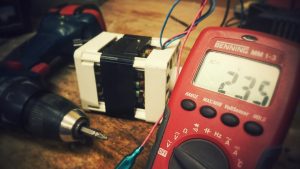 The replacement of the ANSI Z540.1 with the ANSI Z540.3 and the ISO/IEC 17025 back in 2007 has led to a number of questions from Document Center Inc. customers. To help you understand the situation, here’s a review of the migration path. And we’ll discuss the differences between the ANSI Z540.1 and ANSI Z540.3 as we go.
The replacement of the ANSI Z540.1 with the ANSI Z540.3 and the ISO/IEC 17025 back in 2007 has led to a number of questions from Document Center Inc. customers. To help you understand the situation, here’s a review of the migration path. And we’ll discuss the differences between the ANSI Z540.1 and ANSI Z540.3 as we go.
Calibration is an essential activity in many organizations, including test labs and manufacturing firms with precision machinery. Back in the day, the MIL-C-45662 Calibration System Requirements ruled the day. This original Mil Spec was replaced by the standard MIL-STD-45662 in 1980. However with Mil Spec reform in the 1990’s, the document was cancelled in favor of the ANSI-Z540.1 and ISO-10012.
ANSI Z540.1 was titled Laboratories, Calibration, and Measuring and Test Equipment. Released in 1994, it consisted of 2 parts — the Part 1 was based on the old ISO/IEC Guide 25 (now ISO/IEC 17025). The Part 2 was based on the MIL-STD-45662 Revision A. So you can see that the document was a natural successor to the old military document. However, it was developed specifically for calibration services, not testing labs.
The Part 1 directly addressed general requirements for the competence of calibration labs. It applied to the development and implementation of a quality system. For some situations, these older requirements may still be used when both the customer and the lab are in agreement.
With the release of the ISO/IEC 17025 (General requirements for the competence of testing and calibration laboratories) in December 1999, there was an obvious overlap between the two standards. In an effort to make it clear and easy for users, NCSL (the caretaker of the ANSI Z540 documents) decided to revamp the Z540 publication. A new standard would take the place of the Part 2 while the ISO/IEC 17025 would be adopted for the material in Part 1.
The ANSI Z540.1 Part 2 addressed quality assurance requirements for a supplier’s system with regards to measurement accuracy. This included calibration of test equipment. It provided customers to be assured that the calibration lab was meeting the prescribed requirements.
The “new” ANSI Z540.3, Requirements for the Calibration of Measuring and Test Equipment, again establishes the technical requirements for the calibration of measuring and test equipment. So you’ll get requirements for establishing and maintaining the performance of your measuring and test equipment. The suitability of a calibration for the application is covered. And the traceability of your measurement results to the International System of Units (SI) is included.
So to recap, the ANSI Z540.1 was an umbrella publication. When the ISO/IEC 17025 was released, a new ANSI Z540.3 was issued just for the calibration requirements themselves. The ISO/IEC document was adopted for the competence requirements.
If you need any of these publications, use Document Center Inc. for your purchase. We have over 1 million standards for you to choose from at our webstore www.document-center.com. Here are direct links to the order pages for ANSI Z540.3 and the ISO/IEC 17025.
Document Center Inc. has been working with standards since 1982. We have a familiarity with standards that you’ll find at few other organizations. Reach out to us by phone (650-591-7600) or email (info@document-center.com) with any questions you may have. Our services support compliance needs of many companies around the world. Make us your Standards Experts!